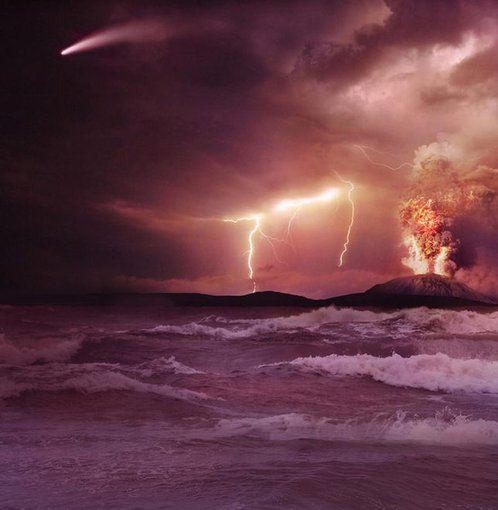
Oct. 7, 2016
Feature Story
One Planet, But Many Different Earths

Artist conception of early Earth. (NASA/JPL-Caltech)Image credit: NASA.
We all know that life has not been found so far on any planet beyond Earth — at least not yet. This lack of discovery of extraterrestrial life has long been used as a knock on the field of astrobiology and has sometimes been put forward as a measure of Earth’s uniqueness.
But the more recent explosion in exoplanet discoveries and the next-stage efforts to characterize their atmospheres and determine their habitability has led to rethinking about how to understand the lessons of life of Earth.
Because when seen from the perspective of scientists working to understand what might constitute an exoplanet that can sustain life, Earth is a frequent model but hardly a stationary or singular one. Rather, our 4.5 billion year history — and especially the almost four billion years when life is believed to have been present — tells many different stories.
For example, our atmosphere is now oxygen-rich, but for billions of years had very little of that compound most associated with complex life. And yet life existed.
The same with temperature. Earth went through snowball or slushball periods when most of the planet’s surface was frozen over. Hardly a good candidate for life, and yet the planet remained habitable and inhabited.
And in its early days, Earth had a very weak magnetic field and was receiving only 70 to 80 percent as much energy from the sun as it does today. Yet it supported life.
“It’s often said that there’s an N of one in terms of life detected in the universe,” that there is but one example, said Timothy Lyons, a biogeochemist and distinguished professor at University of California, Riverside.
“But when you look at the conditions on Earth over billion of years, it’s pretty clear that the planet had very different kinds of atmospheres and oceans, very different climate regimes, very different luminosity coming from the sun. Yet we know there was life under all those very different conditions.
“It’s one planet, but it’s silly to think of it as one planetary regime. Each of our past chapters is a potential exoplanet.”